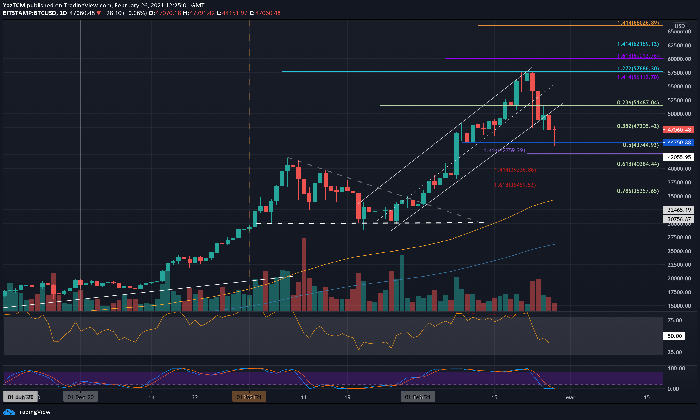North Korea hacking operations have gained notoriety in the realm of cybersecurity, particularly highlighted by the infamous Lazarus Group. In recent months, these activities escalated dramatically as North Korean hackers executed what is now recognized as the largest cryptocurrency theft in history, netting over $1.4 billion from Bybit. Such DPRK cyber attacks illustrate not just the technical prowess of these operatives, but also their strategic accomplices in the world of cryptocurrency security. As cryptocurrency theft becomes increasingly prevalent, understanding the methods deployed by North Korean hackers is crucial for preventing future breaches. This alarming trend underlines the pressing need for enhanced security measures as financial targets remain vulnerable to sophisticated hacking attempts.
The cyber warfare emanating from North Korea has garnered significant attention, especially with the revelations surrounding the notorious Lazarus Group. These hacking campaigns, attributed to the Democratic People’s Republic of Korea, showcase a calculated approach to cybercrime that extends beyond mere theft. By leveraging advanced methods and various subgroups, DPRK operatives effectively exploit vulnerabilities within the cryptocurrency landscape—a sector increasingly seen as a lucrative target. The ramifications of these digital assaults underscore the urgent requirement for robust cybersecurity practices to protect against ongoing threats. Understanding the complexities of North Korean hacking tactics is essential for entities looking to safeguard their assets and information in an evolving digital battlefield.
Unveiling North Korea’s Hacking Operations
North Korea’s hacking operations extend well beyond the notorious Lazarus Group, with various factions under the country’s Cyber Warfare Directorate, largely funded and controlled by the Reconnaissance General Bureau. This bureaucratic structure supports a diverse array of cyberattack methods, targeting sectors ranging from finance to critical infrastructure. Researchers categorize these factions based on their methodologies, revealing a more complex operational landscape that includes specialized groups such as AppleJeus and APT38, each with distinct targeting strategies and capabilities.
Understanding the full scope of the DPRK’s cyber operations involves recognizing that not all attacks are created equal; each group is tailored to exploit specific vulnerabilities. For instance, while Lazarus often focuses on large-scale hacks for financial gain, other entities like DangerousPassword use lower-level tactics, including social engineering, to gain access to secure information. This nuanced approach illustrates that North Korea’s cyber strategy is multifaceted, requiring a broader lens to analyze its implications on global cybersecurity.
The Role of the Lazarus Group in Cryptocurrency Theft
The Lazarus Group has gained infamy for its involvement in high-profile cryptocurrency thefts that have left a significant mark on the industry. This group executed the infamous Bybit hack, deemed the largest in cryptocurrency history, resulting in a staggering loss of $1.4 billion. The audacity of such attacks highlights the technical proficiency and strategic planning employed by North Korean hackers, clearly indicating a well-coordinated effort to undermine the security of virtual currencies. Such incidents reveal the delicate state of cryptocurrency security and the vulnerabilities that can be exploited.
Despite its notoriety, the activities of the Lazarus Group illustrate only one facet of the DPRK’s broader hacking strategy. While they may capture headlines, researchers are finding that other groups are equally competent and dangerous. For instance, factions like APT38 specialize in targeted financial crimes, shifting their focus from traditional banking systems towards cryptocurrency platforms, which are often perceived as less secure. This shift further complicates the landscape for cryptocurrency security, urging stakeholders to remain vigilant and proactive against a complex array of cyber threats.
Implications of North Korean Cyber Operations
The continuous evolution of North Korea’s hacking operations has significant implications for global cybersecurity policies and practices, particularly within the cryptocurrency industry. As more groups emerge and adapt their strategies, the potential for cyberattacks increases, prompting regulatory bodies and private organizations to enhance their defenses. The need for better classification and understanding of these cyber threats is critical; merely addressing the top-tier groups like Lazarus is insufficient to protect against the wider network of DPRK cyber actors.
Cybersecurity experts emphasize the importance of adopting comprehensive protective measures, such as implementing advanced authentication protocols, regular system audits, and fostering a culture of cybersecurity awareness within organizations. Furthermore, collaboration with emergency response units, like SEAL 911, could provide necessary support in mitigating potential attacks. The evolving nature of North Korean hacking operations suggests that ongoing education and innovation in security practices are paramount to safeguarding not only cryptocurrency exchanges but also the larger financial ecosystem.
Targeting Strategies of DPRK Cyber Actors
North Korea’s cyber operations are characterized by a variety of targeting strategies employed by different groups, each with its objectives. The techniques range from sophisticated multi-layered attacks perpetrated by expert groups like APT38 to simpler phishing schemes used by DangerousPassword. Such diversity indicates careful planning and resource allocation to maximize the effectiveness of their campaigns, underlining the importance of understanding the unique methods and motivations behind each group’s operations.
The AppleJeus group, for example, focuses on supply chain attacks, which pose considerable challenges for cybersecurity across industries as attackers manipulate trusted software and platforms. By infiltrating backdoors in commonly used applications, they can compromise entire networks. As these actors become more adept at executing tailored attacks, cryptocurrency exchanges and related businesses must not only defend against conventional threats but also implement strategies to counteract these modern, complex assault vectors.
The Future of Cryptocurrency Security Amid DPRK Threats
As North Korea intensifies its cyber operations, the future of cryptocurrency security hangs in the balance. The persistent threat from hackers affiliated with the DPRK compels organizations to rethink their approaches to cybersecurity. Conventional methods of protecting digital assets may no longer suffice, necessitating adaptive and responsive security measures. Experts advocate for a proactive stance, promoting collaboration among cryptocurrency companies to share intelligence and tactics while employing robust encryption methods and continual vulnerability assessments.
Furthermore, the advent of advanced technologies, such as artificial intelligence, offers opportunities for enhancing cryptocurrency security protocols. By leveraging AI to detect anomalies and potential breaches in real time, firms can significantly reduce their exposure to threats posed by North Korean hackers and other malicious actors. Increasing investments in cybersecurity frameworks, particularly tailored to the specific challenges posed by DPRK cyber threats, will be crucial for the sustained integrity and confidence in the burgeoning cryptocurrency market.
Understanding the Reconnaissance General Bureau’s Role in Cyber Attacks
The Reconnaissance General Bureau (RGB) serves as the backbone of North Korea’s cyber warfare efforts, overseeing multiple hacking entities within the regime. By coordinating various cyber operations, the RGB not only amplifies the effectiveness of individual groups like Lazarus and APT38 but also ensures a diverse range of targets and methodologies. The RGB’s involvement emphasizes the strategic state-sponsored nature of these cyber activities, as they align with broader political goals.
Researchers caution that understanding the extent of the RGB’s influence is critical for developing comprehensive cybersecurity strategies. By segmenting the activities of different hacking groups, security experts can better prepare for and mitigate the threats these entities pose. Furthermore, international collaboration among law enforcement and cybersecurity firms must involve assessing the political context underpinning these attacks to unravel the motivations behind North Korea’s cyber operations.
Proactive Measures Against North Korean Hacking Operations
In light of the growing threat from North Korean hackers, proactive measures are essential for protecting sensitive information and digital assets. Organizations are encouraged to adopt stringent cybersecurity protocols, including advanced encryption techniques and multi-factor authentication. These measures not only safeguard against potential breaches but also deter attackers by increasing the complexity of successful infiltration attempts.
Collaboration is another critical component in bolstering defenses against DPRK hacking efforts. By sharing threat intelligence and collaborating on incident responses, companies can significantly augment their security posture. Engaging with cybersecurity experts and response units, such as SEAL 911, enables organizations to stay ahead of emerging threats, ensuring that they can effectively respond to the evolving tactics employed by North Korean cyber actors.
Real-Time Threat Detection and Response Strategies
The ability to detect and respond to cyber threats in real time is becoming increasingly important, especially in the cryptocurrency sphere where North Korean hacking operations are prevalent. Real-time monitoring systems equipped with advanced analytics can help organizations identify anomalous behavior indicative of potential attacks. These systems not only facilitate swift responses to mitigate damage but also enhance overall resilience against persistent cyber threats from state-sponsored groups.
Investing in sophisticated threat detection technologies, including intrusion detection systems and behavioral analytics tools, can empower organizations to proactively manage risks associated with DPRK cyber activities. Alongside technological solutions, employee training programs focusing on recognizing phishing attempts and other social engineering tactics can strengthen the human element critical to an organization’s cybersecurity framework.
The Importance of Security Collaboration in Cryptocurrency
In an era where cryptocurrency security is increasingly compromised by state-sponsored activities, collaboration among industry stakeholders is vital. This includes partnerships between exchanges, wallet providers, and law enforcement agencies that foster a collective defense against attacks by North Korean hackers. By sharing information on threats and developing unified security protocols, the industry can create a more robust defense mechanism that deters cybercriminals.
Moreover, collaborative efforts in the form of joint cyber drills and threat intelligence sharing can strengthen the overall readiness and adaptability of companies facing cyber threats. Establishing these connections not only enhances the immediate security landscape but builds a proactive culture around cybersecurity within the cryptocurrency sector, significantly reducing the risks posed by groups like Lazarus.
Frequently Asked Questions
What are the primary groups involved in North Korea hacking operations?
North Korea’s hacking operations involve several distinct groups under the Reconnaissance General Bureau (RGB), including the Lazarus Group, AppleJeus, APT38, DangerousPassword, and TraderTraitor. Each group specializes in different cyber attack methods, targeting various financial systems and cryptocurrency platforms.
How has the Lazarus Group contributed to North Korean hacking operations?
The Lazarus Group is known for its significant role in North Korean hacking operations, particularly in major financial heists like the recent $1.4 billion theft from Bybit. This group has become synonymous with DPRK cyber attacks, executing advanced techniques to exploit vulnerabilities in cryptocurrency security.
What breaches signify the threat posed by North Korean hackers to cryptocurrency security?
Recent breaches, such as the massive $1.4 billion theft of cryptocurrency by the Lazarus Group, highlight the severe threat posed by North Korean hackers. These operations not only result in significant financial losses but also jeopardize cryptocurrency security across exchanges.
What strategies do North Korean hackers use to carry out cyber attacks?
North Korean hackers utilize various strategies, including supply chain attacks by the AppleJeus group, social engineering tactics by DangerousPassword, and advanced targeting methods employed by TraderTraitor, making them a formidable threat to both traditional financial institutions and cryptocurrency platforms.
How can cryptocurrency companies protect themselves against North Korean hacking operations?
Cryptocurrency companies can protect themselves against North Korean hacking operations by implementing basic security measures, staying informed about emerging threats, and potentially collaborating with emergency response units like SEAL 911 to enhance their cybersecurity posture.
What should companies know about the ongoing threat from DPRK cyber attacks?
Companies should be aware that DPRK cyber attacks are evolving, with sophisticated methods being employed by various hacking groups such as the Lazarus Group and APT38. Remaining vigilant and adopting proactive security practices is crucial in mitigating these persistent threats.
Are zero-day attacks a risk from North Korean hackers in the cryptocurrency sector?
While North Korean hackers have demonstrated capabilities for zero-day attacks, there have been no reported incidents targeting the cryptocurrency sector specifically. Nevertheless, the potential for such attacks highlights the importance of robust cybersecurity measures.
What role does the Security Alliance play in combating North Korean hacking operations?
The Security Alliance assists in combating North Korean hacking operations by providing resources and support through groups like SEAL 911, aimed at helping organizations secure decentralized systems and respond effectively to cyber incidents.
| Key Points |
|---|
| In February 2025, North Korean hackers executed the largest cryptocurrency hack in history, stealing $1.4 billion from Bybit via the Lazarus Group. |
| The Lazarus Group is often misidentified as the sole perpetrator of North Korea’s cyber-attacks, overshadowing other active groups within the DPRK’s hacking ecosystem. |
| The DPRK’s hacking operations are categorized under the Reconnaissance General Bureau (RGB), which includes multiple specialized groups: AppleJeus, APT38, DangerousPassword, and TraderTraitor. |
| TraderTraitor is the most sophisticated group, targeting exchanges with substantial reserves using advanced hacking techniques. |
| AppleJeus is known for supply chain attacks, while DangerousPassword uses social engineering tactics such as phishing. |
| AFP38 focuses on financial crimes and has transitioned from traditional banking targets to those in the cryptocurrency sector. |
| Experts encourage cryptocurrency firms to improve basic security practices and collaborate with organizations like SEAL 911 in case of breaches. |
| Despite capabilities for zero-day attacks, there have been no documented cases against the cryptocurrency industry, highlighting a potential area for enhanced security. |
Summary
North Korea hacking operations extend far beyond the notorious Lazarus Group, revealing a complex infrastructure of cyber threats. While the Lazarus Group is often the face of DPRK cyber activity, various other specialized groups, such as AppleJeus and TraderTraitor, play significant roles in cyber offensives and financial crimes. Understanding this multi-faceted hacking ecosystem is crucial for businesses, particularly those in the cryptocurrency sector, to bolster their defenses and prepare against potential attacks. Without proactive security measures and awareness of these sophisticated tactics, the threat posed by North Korea hacking operations remains an ever-present danger.
North Korea hacking operations have taken center stage in recent years, particularly highlighted by the infamous Lazarus Group’s activities. This reclusive nation is not just a background player in the cybersecurity realm—its highly skilled North Korean hackers have executed some of the most audacious DPRK cyber attacks, including the staggering $1.4 billion theft from Bybit. This unprecedented cryptocurrency theft has raised serious concerns about cryptocurrency security, compelling both individuals and organizations to reevaluate their defenses against these sophisticated threats. Analysts warn that the Lazarus Group is merely one facet of a broader network of cybercriminals associated with the North Korean regime. As the digital landscape continues to evolve, understanding the implications of these cyber operations is more crucial than ever for safeguarding assets and ensuring robust security measures in the cryptocurrency space.
The ongoing digital aggression from North Korea takes many forms, with actions ranging from state-sponsored hacking to large-scale financial fraud. Contributing to this ever-evolving threat landscape are numerous factions that operate under the auspices of the North Korean government, primarily targeting lucrative sectors such as cryptocurrency and finance. The notorious Lazarus Group, widely known for executing high-profile attacks, represents just a fraction of the broader ensemble of cyber units actively engaged in deceptive practices aimed at enriching the nation. By employing various tactics including phishing scams and social engineering, these operatives demonstrate a dangerous versatility that challenges traditional cybersecurity protocols. As threats escalate, it becomes imperative for organizations to enhance their vigilance and invest in resilient security strategies to counteract the looming risks posed by North Korean cyber initiatives.
















Leave a Reply